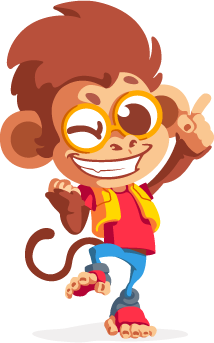Escola Games | Jogos Educativos
https://www.escolagames.com.br
Teacher's support sheet

Looking for Cards
We need your help to unlock all the chests and collect the magic cards.
By arranging the cards, you will reveal a hidden drawing in the crystal ball.

Teacher's tips
As students progress in their understanding of literacy, they move from reading and writing monosyllabic words (often with consonant-vowel-consonant constructions) to reading and writing multisyllabic words. Instruction focused on teaching syllables to students usually focuses on teaching different types of syllables (open and closed) and what happens when syllables come together in a word. Playful activities such as online games promote learning of this understanding in addition to making the study even more fun. [FIM-DICA]
Objectives for the student
- Identify and differentiate the letters of the alphabet;
- Build the concepts of letter and syllable;
- Distinguish vowels from consonants;
- Know and identify simple syllables;
- Perceive the use of the alphabet in word construction;
- Develop the ability to join syllables to form words;
- Develop attention and concentration;
- Develop motor coordination;
- Recognize the written and sound differences of syllables;
- Know and identify syllables;
- Develop reading skills, reading simple syllables;
- Fix acquired knowledge in the classroom;
Objectives for the teacher
- Develop reasoning;
- Provide, in a playful and creative way, the advancement in the children’s reading process;
- Expand the class’s repertoire of letters and words;
- Teach students to recognize syllabic units through word-building activities
- Teach the process of word formation through syllabic junctions;
- Favor the understanding of the process of word construction through letters;
- Develop attention and concentration;
- Work on syllabic division in a playful and enjoyable way;
- Fix content worked on in the classroom;
- Expand students’ knowledge;
Approach suggestion for the teacher
- (Suggestion 1) Work with nursery rhymes, rhymes, and tongue twisters as a contribution to literacy.
- (Suggestion 2) Animated dictation: put several objects in a box and draw them to the students. Ask them to write the name of the object shown.
- (Suggestion 3) Unscramble the letters to form the correct word. On a sheet of paper or on the board, write several scrambled words, which can be scrambled but separated by syllables in the case of initial series, for 3rd grade students the word can be completely scrambled.
- (Suggestion 4) Promote dictation with the words presented in the game.
- (Suggestion 5) Use crossword puzzles.
- (Suggestion 6) Separate the names of objects in the classroom into syllables.
- (Suggestion 7) Hangman game with simple syllable words.
- (Suggestion 8) Use cutouts of letters and words in magazines to form known phrases and words.
- (Suggestion 9) Syllable memory - the pairs will be composed of a drawing and the syllable that starts the name. Example: a card with a drawing of a cup and the other card with the syllable XÍ.
- (Suggestion 10) Ask students to collect PET bottle caps, then cut out and glue each letter of the alphabet inside the caps, distribute them to students and ask them to form words.
